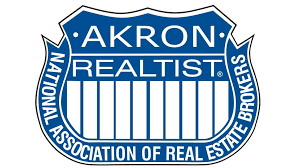Minority Homeownership Moves Up in Q1July 28, 2017 by
shooinThe national homeownership rate didn’t move much off a near 50-year low in the first quarter, but the rates for African Americans and Hispanics have started to tick upward, according to the U.S. Census Bureau.
The homeownership rate for black households, which fell to its lowest level since the Civil Rights era last year, rose by 1.2 percentage points year over year as of first-quarter 2017, to 42.7 percent. The rate for Hispanics rose 1.3 percentage points in the same period, to 46.6 percent, according to Census data.
The overall homeownership rate inched up just 10 basis points over the same period, and stood at 63.6 percent at the end of the first quarter, the U.S. Census Bureau reported.
The
African American rate, which has run below all other major ethnic groups, rose a full percentage point quarter over quarter as of first-quarter 2017.
“We are definitely hoping it is progress,” said Ronald Cooper, president of the National Association of Real Estate Brokers (NAREB), an organization founded 70 years ago to promote black homeownership.“It is going to take a couple of quarters to say it is a trend. We would like to feel that it is a direct result of NAREB’s effort on the regulatory arena and in the black community.”
Despite the uptick, Cooper noted that homeownership levels for all minorities are still near record lows.
“Homeownership right now, for all America, is lower than it has been since the late ‘60s,” Cooper told Scotsman Guide News. “Like I say, it is the number one basis for low- and moderate-income and middle-class Americans to build wealth. The government really should be doing more to promote middle America.”
Hard numbersHousing analysts rarely try to put a number on what constitutes a healthy homeownership rate. The figure is influenced by several factors, including age demographics and population; however, advocates do point to a disturbingly wide gap between the white homeownership rate, and the black and Hispanic rates.
The homeownership rate for whites declined 30 basis points year over year as of first-quarter 2017, to 71.8 percent, according to the U.S. Census data, but remains 29.1 and 25.2 percentage points above the black and Hispanic rates, respectively
Boosting minority homeownership is considered a key to rebuilding wealth in minority communities that suffered disproportionately during the subprime mortgage crisis and the housing crash. NAREB has set as a goal to add two million black homeowners within five years.
The National Association of Hispanic Real Estate Professionals has set a goal of boosting the Hispanic homeownership rate to 50 percent. Higher wages and age demographics have boosted the Hispanic rate over the past year, said Marisa Calderon, executive director with the National Association of Hispanic Real Estate Professionals.
“Hispanics are beginning to age into homeownership,” she told Scotsman Guide News. “At a median age of 28, the demographic is much younger. If you couple that with the fact that [Hispanics] place high value on homeownership, and they have increasing means to purchase a home, then it is kind of a perfect nexus.”
Advocates said minorities often have more trouble qualifying for a mortgage. The housing market also has low inventories of homes for sale. These are the two biggest obstacles right now to boosting homeownership among minorities, according to advocates.
“It is becoming harder and harder to find homes that are available at affordable prices,” Calderon said. “So, inventory shortages are a concern and access to credit is another barrier.”
Source:
Scotsman GuideFiled Under:
Business,
NewsHow Market Forces and Bias Displaced African Americans in PortlandJuly 28, 2017 by
shooinThis story, part of an open: Housing series exploring rising barriers to homeownership in Portland, looks at historic and current forces affecting the city’s African-American residents, and what they likely mean for the future.PORTLAND, Ore. — As a teenager living under Jim Crow laws in the 1940s, Paul Knauls Sr. rode a bus 37 miles round-trip from his small Arkansas town to reach a school that served African-Americans.
After graduating high school in 1949, he was part of the group of black servicemen who integrated Fairchild Air Force Base in Spokane, Washington. As a budding Portland entrepreneur in the 1960s, he risked his savings to buy a nightclub in the section of North/Northeast formerly known as Albina, the part of town where white realtors and property owners pushed blacks to live and own businesses.
Knauls struggled against racism throughout his life. And, in some senses, he won.
He became a successful business and property owner, prospering financially and creating beloved places for Portland’s black community. He clung to his stake in North/Northeast, as the once-disinvested area was transformed, to the disadvantage of many residents, by urban renewal, then gentrification.
Knauls, 86, still lives on Northeast Bryant Street in the house that his second wife, Geneva, bought in 1965 for $28,000. It’s now worth more than $400,000. He still greets customers at the hair salon he named for Geneva on Northeast Martin Luther King Jr. Boulevard. His son, Paul Knauls Jr., 64, manages the operation.
But Knauls also lost.
Many of his black neighbors, and most of the black-owned businesses that used to crowd commercial streets such as North Williams Avenue and Alberta Street, are gone. They’ve been replaced by a new landscape of gleaming condos, yoga studios and cafes owned and occupied, almost entirely, by white people.
Even Knauls’ son has been priced out of the neighborhood. He rents an apartment in Vancouver, Washington, for $900, about half what he’d pay for a similar place in inner North/Northeast Portland. Recently, on his highway commute to Geneva’s, he missed his usual off-ramp and found himself on an unrecognizable street as he made his way north to the salon.
“After what I saw, I never want to go to Williams Avenue again,” Knauls Jr. says. “I used to know every business owner on that street. They’d say, ‘How ya doing, Paul,’ as I’d walk in the door … It was my culture.”
Now, he says, “You feel like a stranger in your house.”
Source:
KGWFiled Under:
Business,
News

